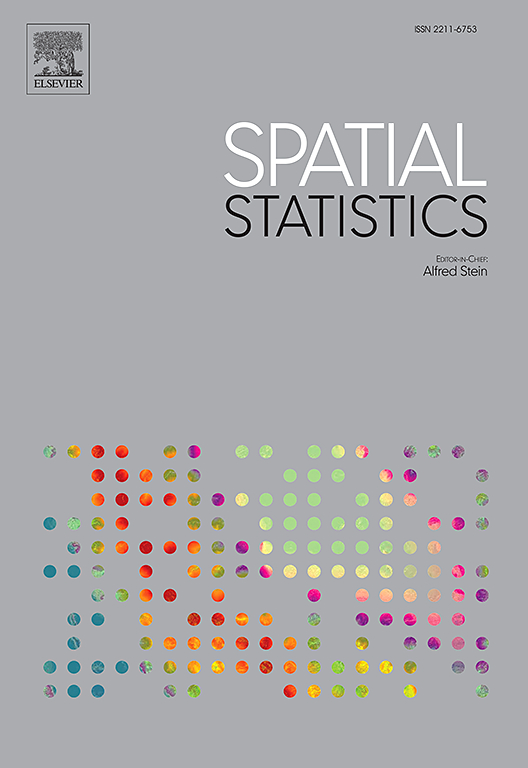Similarity and geographically weighted regression considering spatial scales of features space
IF 2.5
2区 数学
Q3 GEOSCIENCES, MULTIDISCIPLINARY
引用次数: 0
Abstract
Unlike a geographically weighted regression (GWR), a similarity and geographically weighted regression (SGWR) calculates weights using attribute and geographic similarities, thereby effectively improving the accuracy of the model. Nevertheless, SGWR does not set an attribute similarity bandwidth. This leads to its inability to measure the scale of variation of spatial processes in feature space. In addition, owing to the solving method used, SGWR can get stuck in local optima. To address these issues, this study proposed an improved similarity and geographically weighted regression model (SGWR-GD) that adds bandwidth to the attribute similarity kernel function. This parameter gives SGWR-GD the ability to measure the scale of change of spatial processes in the attribute dimension and thus enhances the flexibility of modelling. When solving the model, SGWR-GD first calculated the gradient of the model's Modified Akaike Information Criterion (AICc) with respect to the two bandwidths and the impact ratio. Subsequently, the optimal global solution of the model was obtained based on a gradient descent algorithm with box constraints. SGWR-GD and SGWR were applied to five different datasets and the accuracies of their fitting results were compared. SGWR-GD significantly improved the accuracy of the model compared to SGWR. In addition, the SGWR-GD stably determined the global optimal solution for each parameter. Simultaneously, the distribution of local residuals was also more stable.
考虑特征空间尺度的相似性和地理加权回归
与地理加权回归(GWR)不同,相似度和地理加权回归(SGWR)利用属性和地理相似度计算权重,从而有效地提高了模型的准确性。但是,SGWR不设置属性相似带宽。这导致其无法测量特征空间中空间过程的变化尺度。此外,由于采用的求解方法,SGWR可能陷入局部最优。为了解决这些问题,本研究提出了一种改进的相似度和地理加权回归模型(SGWR-GD),该模型在属性相似度核函数中增加了带宽。该参数使SGWR-GD能够在属性维度上度量空间过程的变化尺度,从而增强建模的灵活性。在求解模型时,SGWR-GD首先计算模型的修正赤池信息准则(Modified Akaike Information Criterion, AICc)相对于两个带宽和冲击比的梯度。随后,基于带框约束的梯度下降算法,得到了模型的全局最优解。将SGWR- gd和SGWR应用于5个不同的数据集,并比较了它们的拟合结果的精度。与SGWR相比,SGWR- gd显著提高了模型的精度。此外,SGWR-GD稳定地确定了各参数的全局最优解。同时,局部残差的分布也更加稳定。
本文章由计算机程序翻译,如有差异,请以英文原文为准。
求助全文
约1分钟内获得全文
求助全文
来源期刊

Spatial Statistics
GEOSCIENCES, MULTIDISCIPLINARY-MATHEMATICS, INTERDISCIPLINARY APPLICATIONS
CiteScore
4.00
自引率
21.70%
发文量
89
审稿时长
55 days
期刊介绍:
Spatial Statistics publishes articles on the theory and application of spatial and spatio-temporal statistics. It favours manuscripts that present theory generated by new applications, or in which new theory is applied to an important practical case. A purely theoretical study will only rarely be accepted. Pure case studies without methodological development are not acceptable for publication.
Spatial statistics concerns the quantitative analysis of spatial and spatio-temporal data, including their statistical dependencies, accuracy and uncertainties. Methodology for spatial statistics is typically found in probability theory, stochastic modelling and mathematical statistics as well as in information science. Spatial statistics is used in mapping, assessing spatial data quality, sampling design optimisation, modelling of dependence structures, and drawing of valid inference from a limited set of spatio-temporal data.
 求助内容:
求助内容: 应助结果提醒方式:
应助结果提醒方式:


